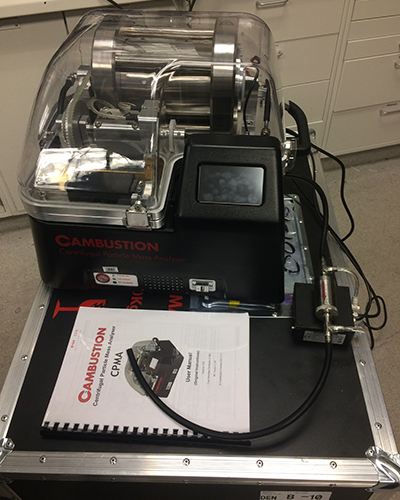Instrumentation
Centrifugal Particle Mass Analyzer (CPMA)

CSL has a Centrifugal Particle Mass Analyzer (CPMA), a device for selecting aerosol particles by their mass-to-charge ratio. The CPMA is available throughout CSL to help advance our science by extending the aerosol parameters we control. Shuka Schwarz, in our Atmospheric Composition & Chemical Processes research program, initially spent some time with the instrument to ensure it was operating correctly, and provided comments on its use. He is available to help set it up (if needed / desired).
The acquisition of the CPMA can inspire us to think anew about opportunities to address science questions of interest here at NOAA. There are already some firm ideas for applications (which justified the purchase), but let's not miss the other good ones that are still "out on the range."
Point of Contact: Joshua (Shuka) Schwarz, NOAA
Use the NOAA CSL CPMA Calendar to reserve the instrument (sign in to your NOAA Google account). Please be vigilant about reserving enough time to both "work out the kinks" and accomplish your goals with this new instrument, while also being sensitive to needs and interests of others in CSL.
Comments:
- The CPMA only transfers particles with positive charge; most of our DMAs (Dynamic Mechanical Analyzers) are setup to select particles with negative charge. The straightforward solution is to run the DMAs with negative voltage (ie. selecting positively charged particles). It may be possible to do this in software (Matt Richardson assured that the new version of the DMA software is capable of this). Alternatively, during FireLab we flipped the control voltage polarity to the DMA internal "Ultravolt" HV supply (merely by swapping the lines to pins 2 and 3). For the external HV supplies using GPIB to interface with the DMA control voltage, a software update is necessary to permit correct operation with negative voltage.
- The CPMA allows some inlet flow to fill the box encasing the spinning cylinders, to avoid pressure changes across the cylinders. Thus the flow meter accessory should be located as near to the CPMA as possible on the output side. I tested the flow meter, and was not fully impressed with its performance at low (<~0.3 LPM) flow so I suggest that if this is a critical parameter for you, an additional measurement be used.
- An electrostatic neutralizer in the care of Ann Middlebrook can be used with the CPMA if operated independently of a DMA. The neutralizer is also occasionally used with some DMAs that don't have dedicated neutralizers. Please see Ann to use the spare and coordinate tracking of its position around the building.
- The CPMA rides on its shipping case (which has wheels), with the flow accessory, power cable, static-free aerosol tubing, and its manual. It is currently in 2A302, where it is welcome to have a permanent "home base."